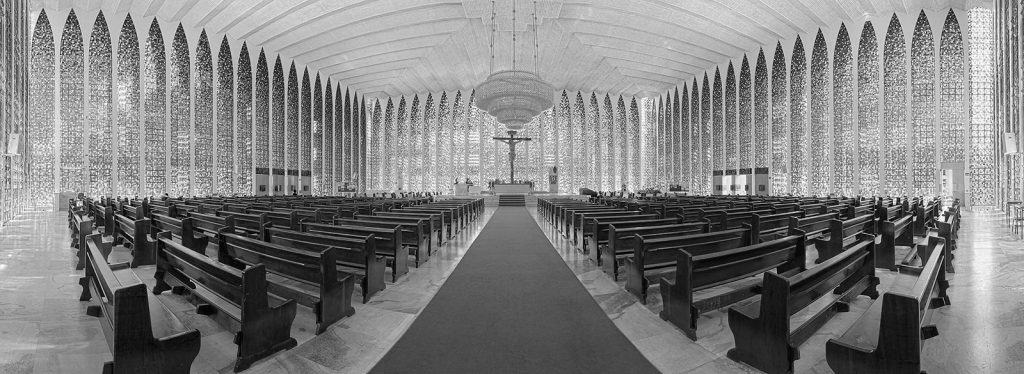The bustling streets of São Paulo were alive with the sound of traffic and chatter as Will Hunter made his way toward Santuário Dom Bosco, a modern church tucked amid the chaos of the city. Designed to stand apart from the noise and movement, the sanctuary was a haven of quietude, its architecture redefining the relationship between faith and the urban fabric.
.
As Will entered, he was struck by the ethereal glow of the interior. Thousands of blue stained-glass panels lined the walls, creating a celestial ambiance. The light shifted as the sun moved, bathing the space in shades of azure, indigo, and gold. “This is light as divinity,” Will thought, his breath catching at the sheer beauty of the space.
.
A priest approached and began sharing the church’s story. “In cities, sacred spaces must offer more than refuge. They must inspire,” he said. “Here, the glass connects the earthly to the divine, reminding us that even amid urban chaos, there is transcendence.”
.
Will thought of other modern churches he had studied. In Tokyo, Tadao Ando’s Church of the Wind used slanted walls and open spaces to create a sanctuary that felt simultaneously grounded and infinite. In Iceland, the Hallgrímskirkja, with its basalt column-inspired façade, reflected the rugged landscapes of its homeland.
.
But not all modern churches were traditional in form. In New York City, the Vessel—a giant, honeycomb-like structure at Hudson Yards—had become a secular gathering place that some called a “temple of connection.” Its design encouraged people to climb, reflect, and engage—a reimagining of what sacred space could mean in a hypermodern city.
.
As the day turned to night, Will found himself at São Paulo’s rooftop garden, which crowned the church’s structure. From this vantage point, he could see the sprawling city illuminated in a sea of lights. The church’s spire rose above the skyline, a beacon of stillness in the midst of motion.
.
“Contemporary churches,” Will realized, “are not just about faith. They’re about context—bridging the sacred and the urban, the eternal and the now.”



